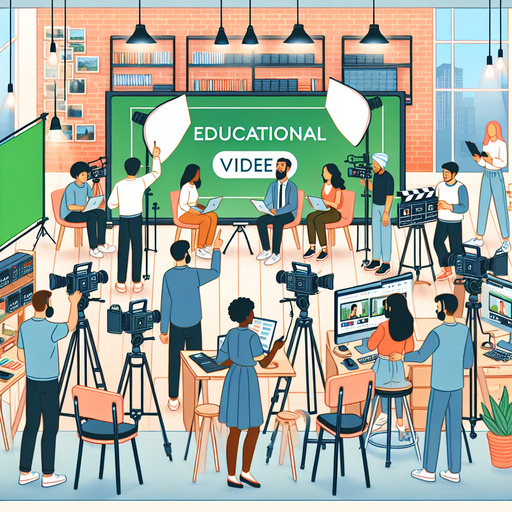
-
Table of Contents
Unlock the secrets to creating impactful educational videos! Discover top tips for collaborating with schools and nonprofits. Learn more here.
Introduction
Educational video production is a powerful tool for schools and nonprofits to enhance learning, engage communities, and promote their missions. Creating effective educational videos requires a strategic approach, especially when collaborating with educational institutions and nonprofit organizations. This guide provides top tips for working with schools and nonprofits in educational video production, covering essential aspects such as understanding the audience, aligning with educational goals, ensuring accessibility, and leveraging storytelling techniques. By following these tips, video producers can create impactful content that resonates with viewers and supports the educational and social objectives of these organizations.
Top Tips for Working with Schools and Nonprofits in Educational Video Production
When embarking on educational video production for schools and nonprofits, it is essential to approach the project with a clear understanding of the unique needs and constraints these organizations face. One of the first steps is to establish a strong line of communication with the stakeholders involved. This includes teachers, administrators, and nonprofit leaders who can provide valuable insights into the educational goals and objectives of the video. By engaging in open dialogue, you can ensure that the content aligns with the curriculum and mission of the organization.
Another critical aspect is to be mindful of budget constraints. Schools and nonprofits often operate with limited financial resources, so it is important to propose cost-effective solutions without compromising the quality of the video. This might involve leveraging existing resources, such as using school facilities for filming or enlisting the help of volunteers. Additionally, consider seeking grants or sponsorships that can help offset production costs.
Understanding the target audience is also paramount. Educational videos should be tailored to the age group and learning level of the students or the specific demographic served by the nonprofit. This requires thorough research and possibly even conducting focus groups to gather feedback. By doing so, you can create content that is both engaging and educational, ensuring that it resonates with viewers and effectively conveys the intended message.
Moreover, collaboration is key when working with schools and nonprofits. Involve educators and nonprofit staff in the creative process, from scriptwriting to final edits. Their expertise can provide valuable input and help ensure that the content is accurate and relevant. This collaborative approach not only enhances the quality of the video but also fosters a sense of ownership and investment among the stakeholders.
In addition to collaboration, flexibility is crucial. Schools and nonprofits often have busy schedules and may need to adjust timelines or filming dates. Being adaptable and accommodating can help build a positive working relationship and ensure that the project stays on track. Furthermore, it is important to be patient and understanding, as these organizations may have other priorities that take precedence over the video production.
Another important tip is to focus on storytelling. Educational videos should not only inform but also inspire and engage the audience. Crafting a compelling narrative can make the content more memorable and impactful. This might involve highlighting real-life stories, showcasing student achievements, or illustrating the positive impact of the nonprofit’s work. By weaving these elements into the video, you can create an emotional connection with the viewers and reinforce the educational message.
Additionally, consider the technical aspects of video production. High-quality visuals and clear audio are essential for maintaining the audience’s attention and ensuring that the content is accessible to all viewers. This may involve investing in good equipment or hiring professional videographers and editors. However, it is also important to strike a balance between quality and budget, finding creative ways to achieve professional results without overspending.
Finally, always seek feedback and be open to revisions. After the initial production, share the video with the stakeholders and gather their input. This iterative process can help refine the content and ensure that it meets the organization’s needs and expectations. By being receptive to feedback and willing to make adjustments, you can produce a final product that effectively supports the educational goals of the school or nonprofit.
In conclusion, working with schools and nonprofits in educational video production requires a thoughtful and collaborative approach. By understanding their unique needs, being flexible and patient, focusing on storytelling, and ensuring high technical standards, you can create impactful videos that educate, inspire, and engage the audience.
Q&A
1. **How can you effectively collaborate with schools and nonprofits for educational video production?**
– Understand their mission and goals.
– Establish clear communication channels.
– Involve educators and stakeholders in the planning process.
– Ensure content aligns with educational standards and objectives.
– Be mindful of budget constraints and seek funding opportunities.
– Use storytelling to engage and inspire the audience.
– Obtain necessary permissions and respect privacy policies.
– Provide training for staff and volunteers on video production basics.
– Evaluate and iterate based on feedback from the school or nonprofit.